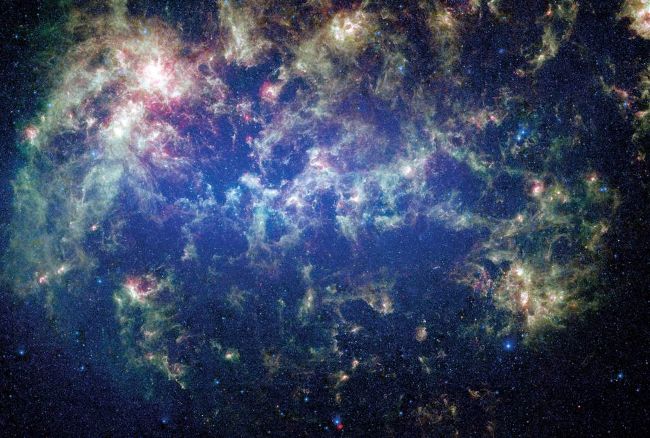GALAXY PROFILE
THE LARGE MAGELLANIC CLOUD
This nearby dwarf galaxy is a satellite in orbit around our own

© ESO
The Large Magellanic Cloud (LMC) is a satellite dwarf galaxy of the Milky Way that’s among the closest galaxies to Earth. At about 163,000 light years from Earth, the dwarf galaxy looks like a faint cloud in Southern Hemisphere skies. It lies on the border of the constellations Dorado and Mensa.
Both the LMC and its companion, the Small Magellanic Cloud (SMC), are named after the explorer Ferdinand Magellan. While astronomers in the Southern Hemisphere had seen these clouds before Magellan’s round-the-world voyage in 1519, the explorer was first to bring that knowledge to the Western world. Magellan died in the Philippines during that voyage, but his crew provided documentation of the discovery upon their return to Europe.
Magellan’s discovery of the LMC and SMC predated telescopes, but even after these instruments allowed astronomers in the 17th century to get a closer look, it was still several hundred years before scientists could accurately calculate the distance to the LMC, the SMC and other nearby galaxies. Scientists came to better understand cosmic distances using tools such as ‘standard candles’ – objects, such as certain types of variable stars, that have known luminosities. From then on the LMC was considered the closest galactic object to Earth, until 1994, when astronomers found the Sagittarius Dwarf Elliptical Galaxy. Another discovery in 2003, the Canis Major Dwarf Galaxy, turned out to be even closer.